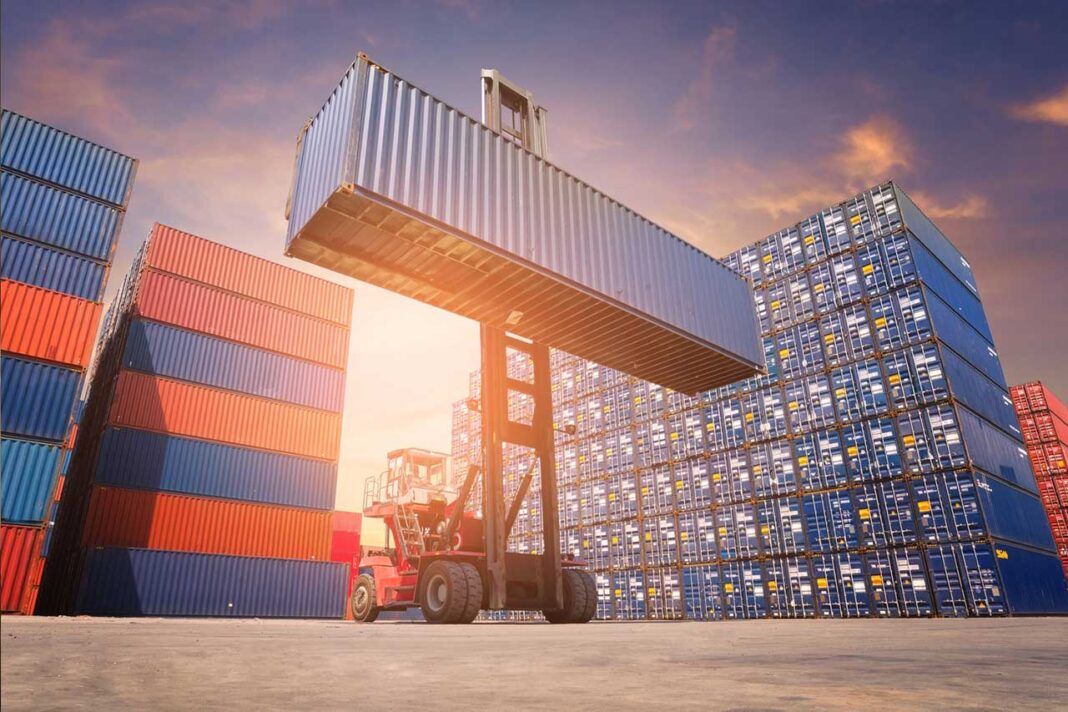Shipping containers have dramatically transformed cargo transportation and introduced improvements in the global supply chain. A crucial part of cargo handling technology is adopting automation. An automated cargo handling system refers to a 100% automatic transportation of full or empty containers for maintenance, parking, stacking, unloading, loading, or any other purpose. Presently, many automated cargo handling systems are in operation, helping organizations boost the speed and precision of logistics operations.
How do automated cargo handling systems work?
Typically, the automated cargo handling system can be configured as one loop or multiple aligned loops to cater to the different levels of the cargo terminal. The system employs advanced technologies, such as robotics, automation, and control systems. These technologies go a long way in enhancing the reliability, safety, and efficiency of cargo handling. All automated cargo handling systems have a few key pieces of equipment.
- Automated Stacking Cranes (ASCs)
- Automated Guided Vehicles (AGVs)
- Data analysis software
- Autonomous Mobile Robots (AMRs)
- Conveyors
- Barcode or radio-frequency identification (RFID) systems
Sensor technology also plays a crucial role in automated cargo handling systems. The sensors gather data on the movement, position, and condition of the equipment and containers across the terminal. This information helps optimize and control the movement of equipment and containers. Moreover, it helps monitor and report the system’s status. The systems can be made up of multiple key position sensors.
- Humidity and temperature sensors
- Maintenance sensors
- Light detection and ranging (Lidar) sensors
- Obstacle detection sensors
- Load sensors
- Global Positioning System (GPS) sensors
There are also various kinds of automated cargo handling systems.
- Automated Rail-Mounted Gantry (ARMG) systems
- Automated Storage and Retrieval Systems (ASRS)
- Automated Container Terminal (ACT) systems
- Automated Straddle Carriers (ASCs)
Robust ASC systems can efficiently handle the trade volume and cater to the specific needs of terminal operations. That said, each of these systems plays a crucial role in boosting the reliability, efficiency, and safety of cargo handling. Automated cargo handling can be imperative when trying to ensure productive and efficient port operations. It can also help meet the demands for bigger cell sizes, taller cranes, and larger ships. Moreover, automated cargo handling can amplify the quality of cargo handling by reducing the incidence rate. It can also increase the productivity of the entire process. In this way, automation significantly impacts the supply chain and logistics industry.
Benefits of automated cargo handling systems
There are multiple benefits associated with automated cargo handling systems.
Improved productivity and efficiency
An automated cargo handling system will be better equipped to handle containers quickly and more accurately, significantly improving the efficiency of any manually operated terminal.
Enhanced safety
Automated cargo handling systems can amplify safety, as they reduce the need for manual labor. This can also lower the probability of human error and result in a safer working space.
Efficient inventory management and tracking
Automated cargo handling systems offer real-time monitoring. In addition, their automated data analysis and gathering can boost accuracy. Further, better inventory visibility and automatic yard management are two other added benefits. All these lead to better inventory management and tracking.
Increased operational flexibility
Automated cargo handling systems can accommodate containers of every size and type and seamlessly adapt to evolving functional requirements.
Expected transformations in automated cargo handling systems
Further advancements in sensor technology will characterize the future of automated cargo handling systems. Better connectivity and automation, with a focus on environmental impact and sustainability, are expected to improve the overall scenario. Consequently, computerized systems can result in greater adoption in terminals and ports globally, which will remarkably impact the global supply chain and logistics industry.
Popular automated cargo handling systems
The decision to pick an automated cargo handling system depends on the cargo type, industry, and the specific requirements of the said industry. One can choose from some of the top systems.
Kalmar One Automation System
These cargo-handling solutions, which include ASCs and shuttle carriers, are quite popular in terminals and ports. They also offer seamless software and hardware integration, helping boost port efficiency.
Cargotec’s Navis N4 Terminal Operating System
The Navis N4 is considered one of the most popular terminal operating systems for automating cargo movement in container terminals. It facilitates cargo planning and optimization and tracks cargo handling in operations to ensure high throughput and efficient port operations.
Siemens Automated Material Handling Systems
The brand Siemens offers state-of-the-art automated systems for cargo handling at airports, warehouses, and distribution centers. Its solutions are known for their speed, precision, and reliability. Some of its key systems include AGVs, conveyor systems, and robotic arms for cargo loading and unloading.
Dematic Automated Warehouse Solutions
The company is adept in automated warehousing systems such as high-speed sortation, automatic storage and retrieval systems, and automated guided vehicles. Such solutions are fundamentally used in the e-commerce and retail industries for storing and retrieving cargo.
Overall, automated cargo handling systems help increase speed and reduce labor costs without compromising safety while moving goods in complex logistics operations.
